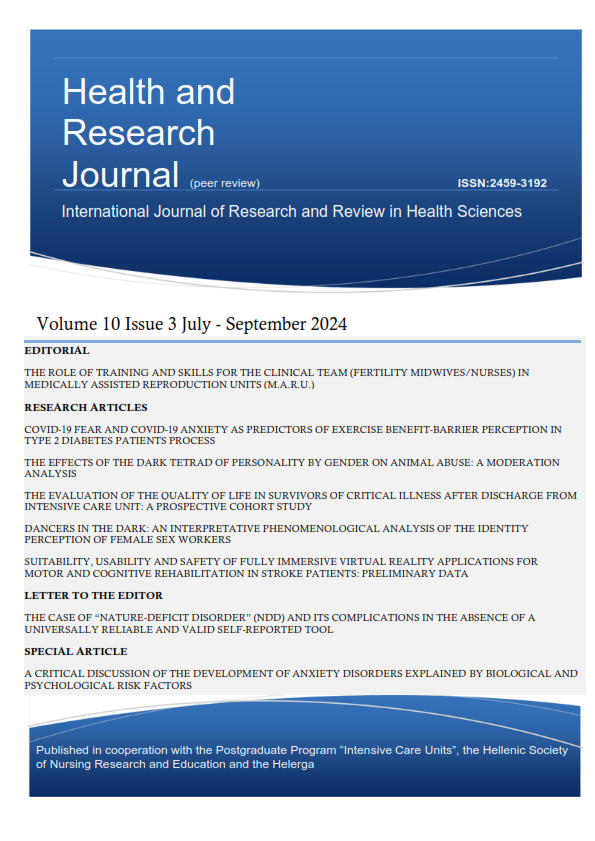Comparison of enteral and parenteral nutrition in critically ill patient of Intensive Care Unit: a systematic review

Abstract
Background: The enteral nutrition (EN) is the first choice of nutritional support for critically ill patients. Despite the fact that the most common practice is choosing continuous EN, there is a controversy about which is the safest and most effective method of nutrition.
Aim: The aim of this systematic review was the analysis of the effect of EN compared to PN for patients that are hospitalized in ICUs, as a function of to the cost and the time of hospitalisation, the hospital-acquired infections, complications and mortality.
Material and Methods: A systematic literature search was conducted in English and Greek language, of published articles during the past 5 years. Articles were unidentified in electronic databases of PubMed, Cochrane Library and Iatrotek using keywords. Grey literature was also taken involved. Finally, 4 studies were included in the systematic review, after the application of exclusion and inclusion criteria.
Results: Eight hundred thirty-eight articles (838) were recovered using keywords. The studies that were finally included and further analysed consisted of 2 systematic reviews and meta-analyses, one randomised clinical trial, a multicentre controlled randomised trial and a systematic review. The method of nutrition (enteral or parenteral) is not related to mortality. The EN is related to less blood bacterial infections and reduction in the time of hospitalization. On the other hand, it causes more gastrointestinal complications. On average, the cost of parenteral nutrition is higher than intestinal.
Conclusions: The EN is indicated to be the primary nutritional support of ICU-treated patients, with the advantage of reduced haematogenous infections and organ failure, beside the fact that it still is a challenging procedure. Critically ill patients are a heterogeneous group, in which each patient needs a personalised diet, depending on the diagnosis, the time spent in the ICU and the variety of possible complications.
Article Details
- How to Cite
-
Patsiou, E.-C., Rousou, E., Kelesi, M., & Fasoi, G. (2019). Comparison of enteral and parenteral nutrition in critically ill patient of Intensive Care Unit: a systematic review. Health & Research Journal, 5(4), 126–133. https://doi.org/10.12681/healthresj.22068
- Section
- Reviews
Copyright notice:
The journal "Health and Research Journal" reserves the rights for copyright of the content of the website and also the copyright of the articles published.
By virtue of their appearance in this journal, the articles are free to be used for non-commercial purposes. However, the articles cannot and must not be used in anyway, published elsewhere or modified without any reference to the author and the first publication of the article.




